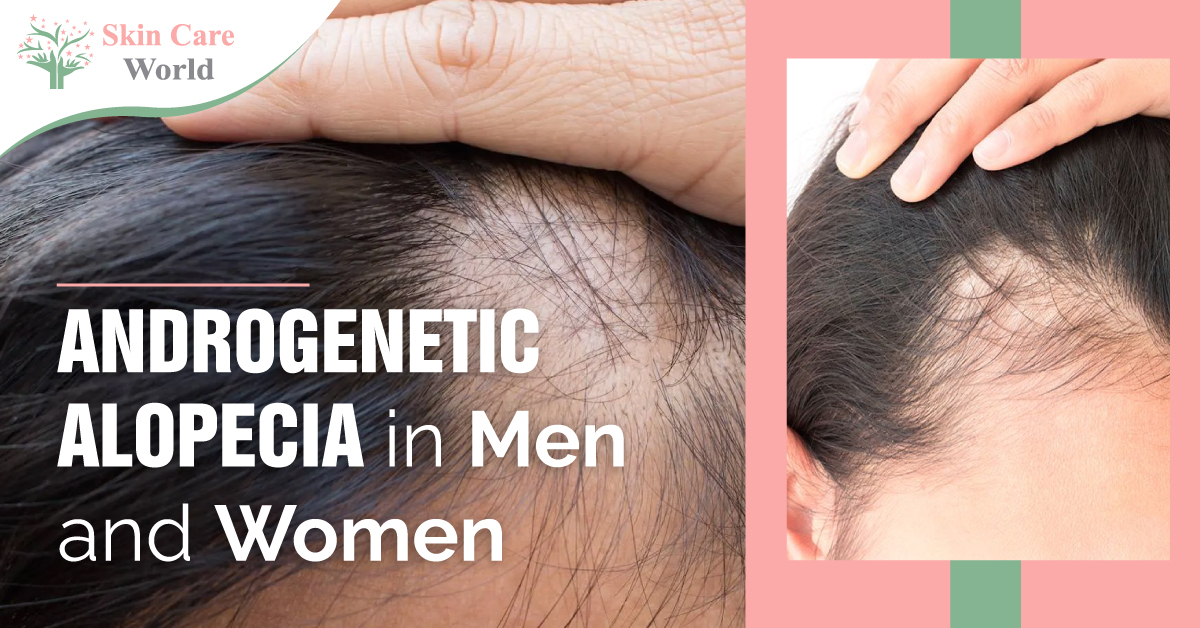
Androgenetic alopecia (AGA) is the medical term for hair loss caused by hormones that can happen to both men and women with specific genes. It is widespread. About 50 million men and 30 million women have it. People with androgenetic alopecia can be very upset by it, which can significantly affect their quality of life. Luckily, many different treatments have been shown to help.
Androgenetic alopecia is also called pattern baldness, hereditary hair loss, female baldness, and many other names. But what is this exact condition? First of all, it's in your genes. However, that doesn't mean your options are completely exhausted.
Androgenetic alopecia is a common cause of hair loss in men and, to a lesser extent, women. Different sources say that over 6.5 million men in the United Kingdom have androgenetic alopecia. Most men will start to lose their hair because of their genes in their 50s or 60s, though some may begin in their late 20s. So don't worry if you're losing hair. Many people experience this.
Hereditary hair loss conditions like androgenetic alopecia can cause hair loss in many different ways, but there are a few signs that men tend to have in common. First, men with androgenetic alopecia have a receding hairline. This is often followed by thinning hair around the crown and temples, which can continue until the bald spots on either side of the head meet. During this process, the hair gradually gets thinner, which can sometimes lead to total baldness.
It's important to remember that everyone with hereditary hair loss has a different experience. If you have androgenetic alopecia, try not to compare yourself to others.
Androgenetic alopecia looks different on the outside, but it can also be a sign of other problems going on inside the body. Androgenetic alopecia in men has been linked to other health problems like diabetes, heart disease, and high blood pressure. So, if you're losing your hair, you might want to make an appointment with your doctor.
Now that we know what androgenetic alopecia is and how it usually shows up let's look at how biology plays a role in it. Androgenetic alopecia can be caused or made worse by several environmental and genetic factors, but it mostly comes down to your genes and your family history.
Researchers have found that androgens, a type of hormone, are mostly to blame for hair loss caused by genes. The leading cause is a type of androgen called dihydrotestosterone, or DHT. People with androgenetic alopecia are more sensitive to the effects of DHT because of their genes.
How does DHT work? It is a hormone made from testosterone, a male sex hormone. On average amounts, it helps men's health and development, especially when they are going through puberty. But DHT can cause hair loss if there is too much of it. As more DHT flows through your bloodstream, it is easy to connect to receptors on the hair follicles on your scalp. This makes the hair follicles smaller. Over time, this shrinking makes it harder for your scalp to support a healthy, full head of hair and keep it that way.
DHT is not a bad thing by itself. It's a normal hormone that helps puberty-aged people thrive. But taking a lot of it can make hair loss conditions like androgenetic alopecia worse. To figure out how DHT can cause hair loss, it helps to know how hair usually grows.
A follicle is a structural component that keeps every hair in its proper place. To better understand hair follicles, picture small capsules that provide the nutrients each hair needs to grow and remain securely attached to the skin. Each hair follicle has a growth cycle that usually lasts between 2 and 6 years (even if you cut or shave your hair).
At the end of each cycle, each hair goes through a period of rest, and a few months later, it falls out. After that, new hair grows from the empty follicle.
Yes, that is the short answer. Androgenetic alopecia is a permanent condition that can be treated in several ways, but hair loss can't be fixed.
Androgenetic alopecia is also not treatable because it is a genetic condition passed down from parent to child.
But even if you were born with a genetic predisposition to inherited hair loss conditions like androgenetic alopecia, there are a few things you can do to stop DHT from destroying your hair.
If you think you might have AGA, you should see your dermatologist as soon as possible to discuss the best ways to treat it. The best way to treat hair loss is as soon as you notice it.

